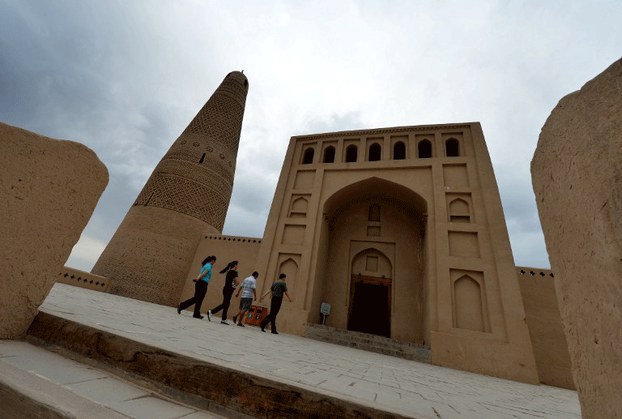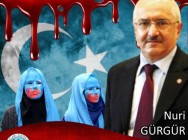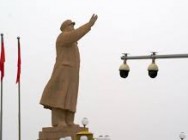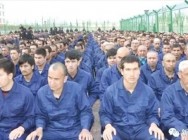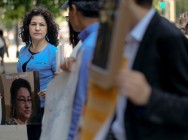Last Minute

- Conflict and Alliance: The US and China: A Centennial Dance: A Century of Relationship from 1900 to 2024
- CHINA RELATIONSEAST TURKESTAN PROBLEM AND TURKEY
- FRONTLINE China Undercover
- Elimination of “Uyghur Counter-Revolutionary Officials” in Academic Fields—Exact Quotes Translated from a Mandarin Audio File
- In Push for Trade Deal, Trump Administration Shelves Sanctions Over China’s Crackdown on Uighurs
- Dalai Lama’s 60th Anniversary Symposium: İlshat Hassan speech in English and Chinese
- Uyghur Detainees from Xinjiang ‘Placed in Nearly Every Prison’ in Shandong Province
- Shahrezad Ghayrat, Unrepresented Women
- Uighur Americans Speak Against China’s Internment Camps. Their Relatives Disappear.
- Rozinisa: The true story of the Uyghur girls in the prison

-

Conflict and Alliance: The US and China: A Centennial Dance: A Century of Relationship from 1900 to 2024
-

CHINA RELATIONSEAST TURKESTAN PROBLEM AND TURKEY
-

FRONTLINE China Undercover
-

Elimination of “Uyghur Counter-Revolutionary Officials” in Academic Fields—Exact Quotes Translated from a Mandarin Audio File
-

In Push for Trade Deal, Trump Administration Shelves Sanctions Over China’s Crackdown on Uighurs
-

Dalai Lama’s 60th Anniversary Symposium: İlshat Hassan speech in English and Chinese
Sex Work Fuels AIDS Spread in China’s Xinjiang
Climbing rates of HIV infection in northwestern China’s Xinjiang region, with the early spread of the disease driven mainly by drug use, are now the result of a burgeoning sex trade in the region’s mostly Muslim ethnic Uyghur south, sources say.
The southern prefectures of Hoten (in Chinese, Hotien) and Kashgar (Kashi) have been especially hard hit, sources say, with growing numbers of brothels disguised as barber shops, massage parlors, and “spas” set up by Han Chinese migrants to the towns.
Young Uyghur farmers and government workers are now those most frequently infected, the owner of one Kashgar clinic told RFA’s Uyghur Service.
“Whenever they get some money, they go right away to these so-called hotels or spas that have this kind of business,” RFA’s source said, speaking on condition of anonymity.
“We have told them not to go there, but some people just can’t control themselves,” he said.
The brothel owners “are all from Chinese cities—they are all Han Chinese,” the clinic owner said.
“These places are the main source of AIDS being spread through sex,” agreed a former senior government official at the Office for AIDS Control and Prevention of the Xinjiang Uyghur Autonomous Region.
“From the outside, they look like legitimate spas or barber shops, but inside they are actually brothels,” the former official, named Yadikar, said.
“Their numbers are increasing throughout the southern Uyghur region because of migrants from China’s other cities, and the government does not restrict them,” he said.
Numbers climbing
By the end of October, 38,283 cases of persons currently infected with HIV or suffering from AIDS had been reported in Xinjiang, with 62 percent of these cases believed to have resulted from sexual activity, according to a Nov. 24 report by the region’s Health and Family Planning Commission cited by Chinese state media.
The rate of sexually transmitted infection in Xinjiang may be even higher, though, Memet Imin, a senior researcher at the Medical Research Center of New York’s Columbia University, said.
“I have watched the Uyghur AIDS situation closely since 2002,” Imin said.
Since the first case of AIDS was reported in 1995, the disease has spread at a rate of 25 to 30 percent each year, Imin said, “and from October 2014 to October 2015 we have seen that more than 85 percent of newly registered cases contracted the virus through sexual contact.”
“In the southern Uyghur region, and especially in Kashgar and Hoten, we have never seen these many AIDS cases before,” Imin said.
“We are seeing them mainly among farmers who haven’t abused drugs or traveled to other parts of the country, so this may have something to do with the number of prostitutes who are encouraged to come to the region.”
Programs cut back
Though large-scale educational programs were formerly held across affected areas, these efforts were cut back or abandoned during the last two years, former government official Yadikar, who now lives in the U.S., said.
“Local governments did not want us to come because of the pressure of [political] stability work,” Yadikar said.
“They said that it would undermine ‘stability’ to gather large numbers of people in any one place,” he said.
Reported by Eset Sulaiman for RFA’s Uyghur Service. Translated by Mamatjan Juma. Written in English by Richard Finney.
http://www.rfa.org/english/news/uyghur/spread-12142015133038.html
RELATED NEWS






